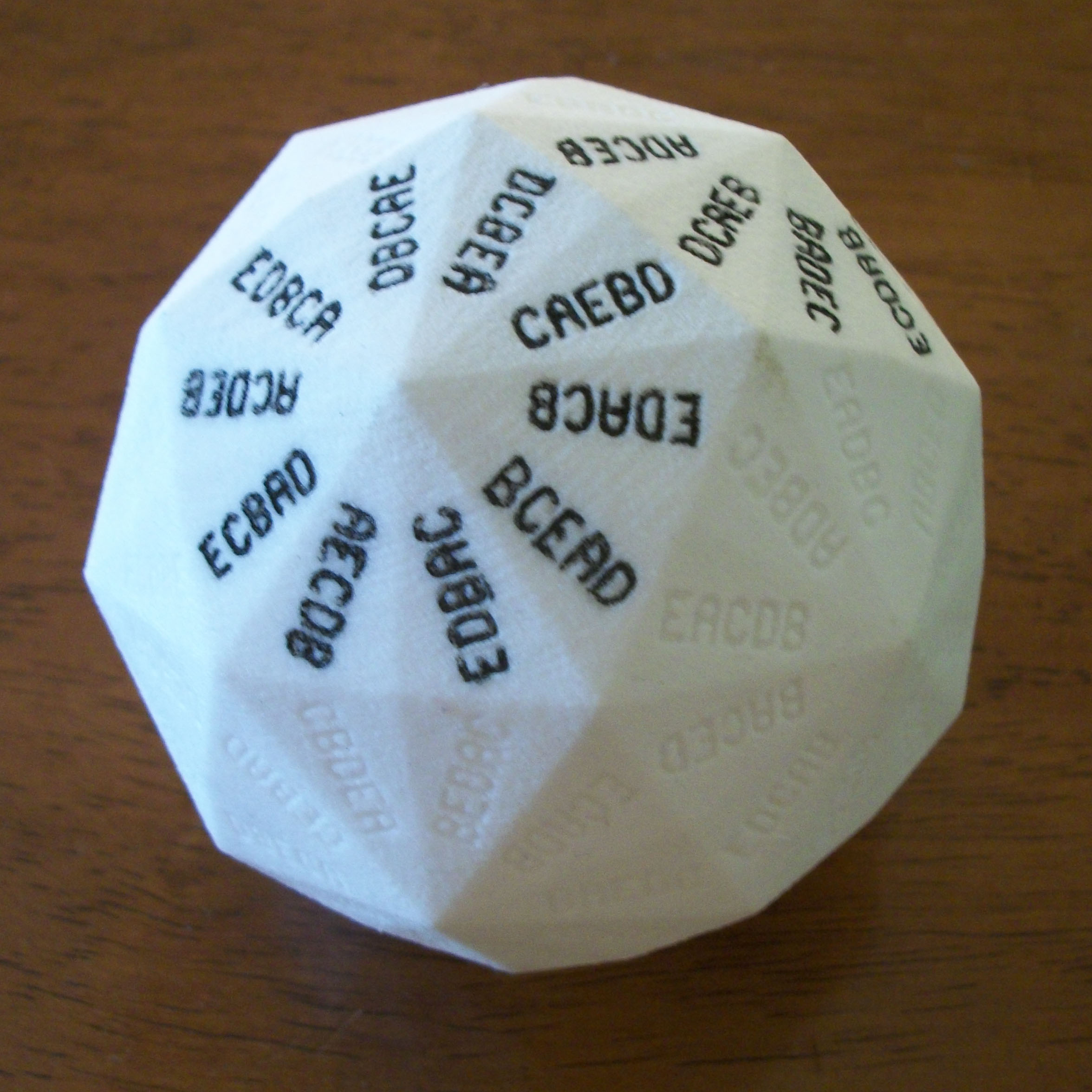A Solution Looking For A Problem
In an attempt to deflect emails and other correspondence from people who are wondering what the point of all of this is, let me (Eric) state upfront: I understand that there are plenty of ways to quickly determine who goes first in a game.
The mathematics of this research problem long ago overshadowed its practicality. If you want to determine who goes first in a game, just roll dice… standard dice. Sure you may have to reroll ties, but I'm sure you'll manage. Or, get all of the spades from a deck of cards and have each player draw one randomly… that'll suffice for up to 13 players.
 For that matter, if you want to create custom dice, you can fairly pick a random permutation for up to five players with a single die. The number of orderings of n players is n!:
For that matter, if you want to create custom dice, you can fairly pick a random permutation for up to five players with a single die. The number of orderings of n players is n!:
- 2! == 2
- 3! == 6
- 4! == 24
- 5! == 120
So, for a three players, a specially designed d6 with “abc”, “acb”, “bac”, bca“, cab”, and “cba” on the faces will, with a single roll, tell you what order the three players should play in (hey! I actually do make such custom dice, and you can find them for sale here at MathArtFun).
There exist pleasant shapes for 24-sided dice, so the 4 player orderings could be determined with a single roll (sorry, I don't make custom d24s). Even 5 players can be accommodated with a single roll of a specially made d120. In fact, I 3D printed such a d120 (pictured at right), but gave up inking it (it's also a bit too massive to be conveniently rolled).
So, sure, the research being done on the Go first Dice problem is not solving a huge problem. But, mathematically speacking, it's a pretty interesting topic (at least to me, and a few others). And besides, there is something cool about using a set of Go First Dice, each player getting to roll his or her own die, and knowing there will be no ties, and the numberings are perfectly fair…
